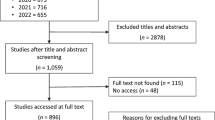Abstract
Both in New Zealand and Chile there exist important forest industries based mostly on pine plantations. The management of harvesting requires a series of activities such as building access roads, harvesting with skidders on flat terrain and cable logging for steep terrain, transportation from forest origins to destinations, such as a port, pulp plant and sawmills.
These harvesting activities imply some potentially harmful environmental impacts such as water sedimentation, erosion and loss of scenic beauty. This has led to the proposal of several mitigating actions, such as creating riparian strips along rivers, avoiding the use of heavy machinery on fragile soils and minimizing road building.
The degree of implementation of these mitigating actions differs in Chile and New Zealand. In New Zealand, the 1991 Resource Management Act regulated the implementation of environmental protection measures. In Chile a series of such measures have been implemented, but a set of definite regulations has not been defined yet and there is a need to develop an economic evaluation of the implementation of environmental measures in terms of reduced timber production and high harvesting costs, together with the benefits to the environment. To support decisions at tactical and operational levels, mathematical models have been developed both in Chile and New Zealand and are being used successfully by the timber industries. These models can be modified to consider diverse environmental protection measures. We analyze the implementation of these modifications and how the new models can help evaluate the economic impact of the protection measures. We show some preliminary results.
Similar content being viewed by others
References
N. Andalaft, P. Andalaft, M. Guignard, A. Magendzo, A. Wainer and A. Weintraub, A problem of forest harvesting and road building, submitted for publication (1999).
B. Clement, Making PLANZ for future harvests, NZ Forest Industries (October 1990) pp. 24,27.
R. Epstein, R. Morales, J. Seròn and A. Weintraub, Use of OR systems in the Chilean forest industries, Interfaces 29(1) (1999) 7–29.
R. Epstein, E. Nieto, A. Weintraub, P. Chevalier and J. Gabarrò, A system for short term harvesting, European Journal of Operations Research (1999).
R. Epstein, A. Weintraub, P. Sapunar, E. Nieto, J. Sesions and B. Sessions, PLANEX: A system for optimal assignment of harvesting machinery, Annals of the LIRO Harvest Planning Conference, Nelson, New Zealand (1995).
O. Garcia, FOLPI, A forestry-oriented linear programming interpreter, in: Proceedings IUFRO Symposium On Forest Management Planning and Managerial Economics, ed. H. Nagumo et al., University of Tokyo (1984) pp. 293–305.
A.D. Gordon, M.E. Lawrence and D. Pont, Assessing the potential yield of stands priori to harvesting, in: Proceedings of the Institute of Foresters of Australia 16th Biennial Conference, Ballarat, Victoria, Applications of New Technology (1995) pp. 193–200.
S. Kilvert and B. Hartsough, Visual impacts of forest operations: measuring concern in New Zealand, Logging Industry Research Organization Report, Vol. 18(9) (1993).
B.R. Manley, New Zealand experience in linking short-term and long-term forest planning, in: Proceedings of the International Symposium on Systems Analysis and Management Decisions in Forestry, ed. G.L. Paredes, Valdivia, Chile (1994) pp. 315–335.
B.R. Manley, New information tools for the forest manager, in: Proceedings of the New Zealand Institute of Forestry Conference, Taupo, Practical Applications for New Technologies (1995) pp. 43–66.
A. Muñoz, Evaluaciòn del impacto econòmico de medidas medio-ambientales en la planificaciòn forestal de cosecha de corto plazo, Engineering Thesis, University of Chile (1998).
G. Murphy and W. Blundell, The impact of environmental constraints of harvesting in the Marlborough Sounds regions of New Zealand, in: Managing Forestry Operations in a Changing Environment, Council on Forest Engineering Proceedings, Kill Devil Hills, NC (1990).
G. Murphy and M. McConchie, The design of plantation harvesting system layout for difficult terrain, Symposium on Forest Harvesting in Southeast Asia, Singapore (June 18-20 1991).
P. Venegas, Impacto econòmico de la internalizaciòn de medidas de protecciòn medio ambiental en la toma de decisiones de cosecha forestal, Engineering Thesis, University of Chile (1998).
R. Visser and M. McConchie, The impact of riparian buffer strip characteristics on forest harvesting, Logging Industry Research Organization Report, Vol. 18(10) (1993).
Author information
Authors and Affiliations
Rights and permissions
About this article
Cite this article
Weintraub, A.P., Epstein, R., Murphy, G. et al. The impact of environmental constraints on short term harvesting: Use of planning tools and mathematical models. Annals of Operations Research 95, 41–66 (2000). https://doi.org/10.1023/A:1018966511108
Issue Date:
DOI: https://doi.org/10.1023/A:1018966511108




